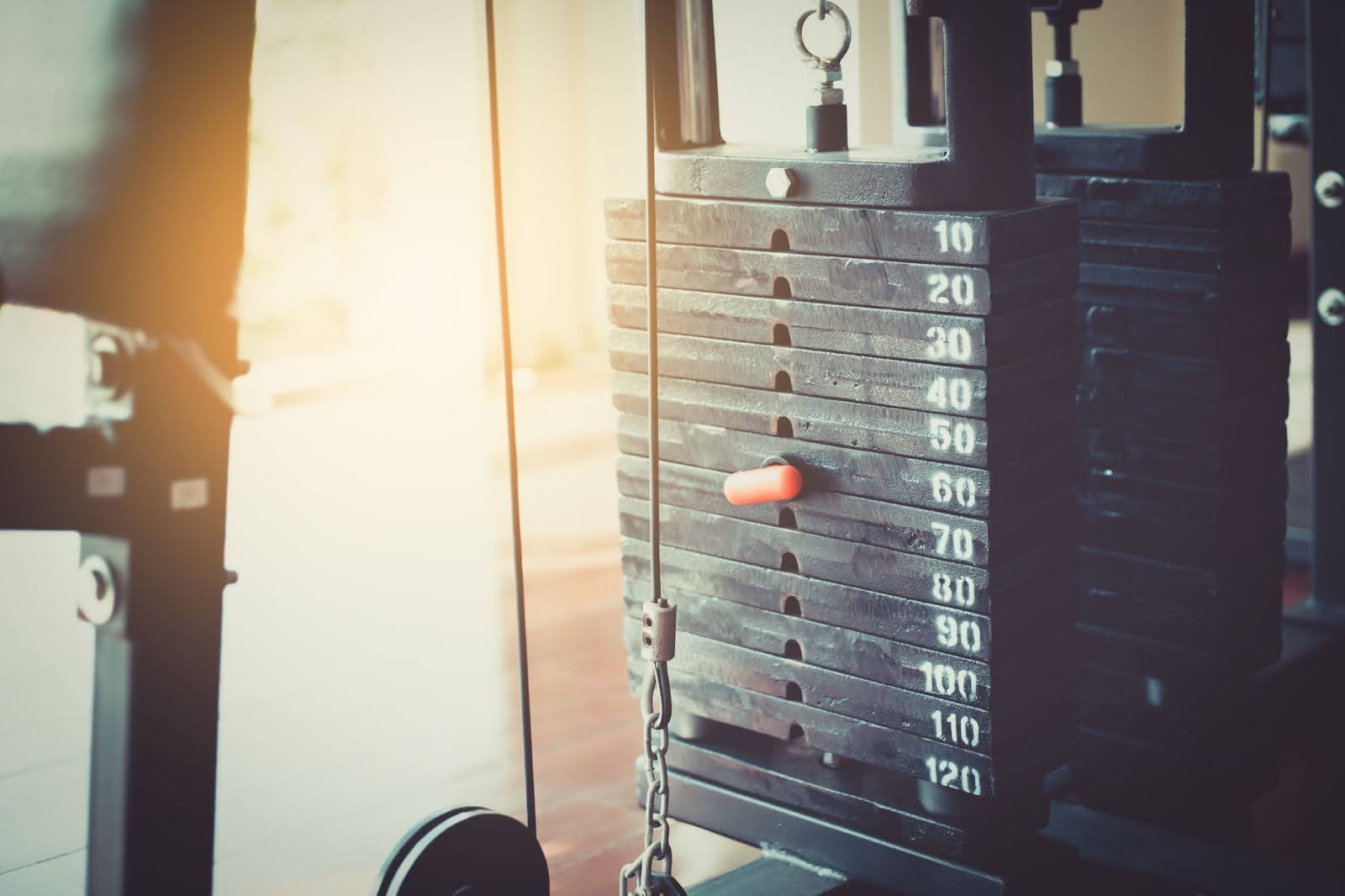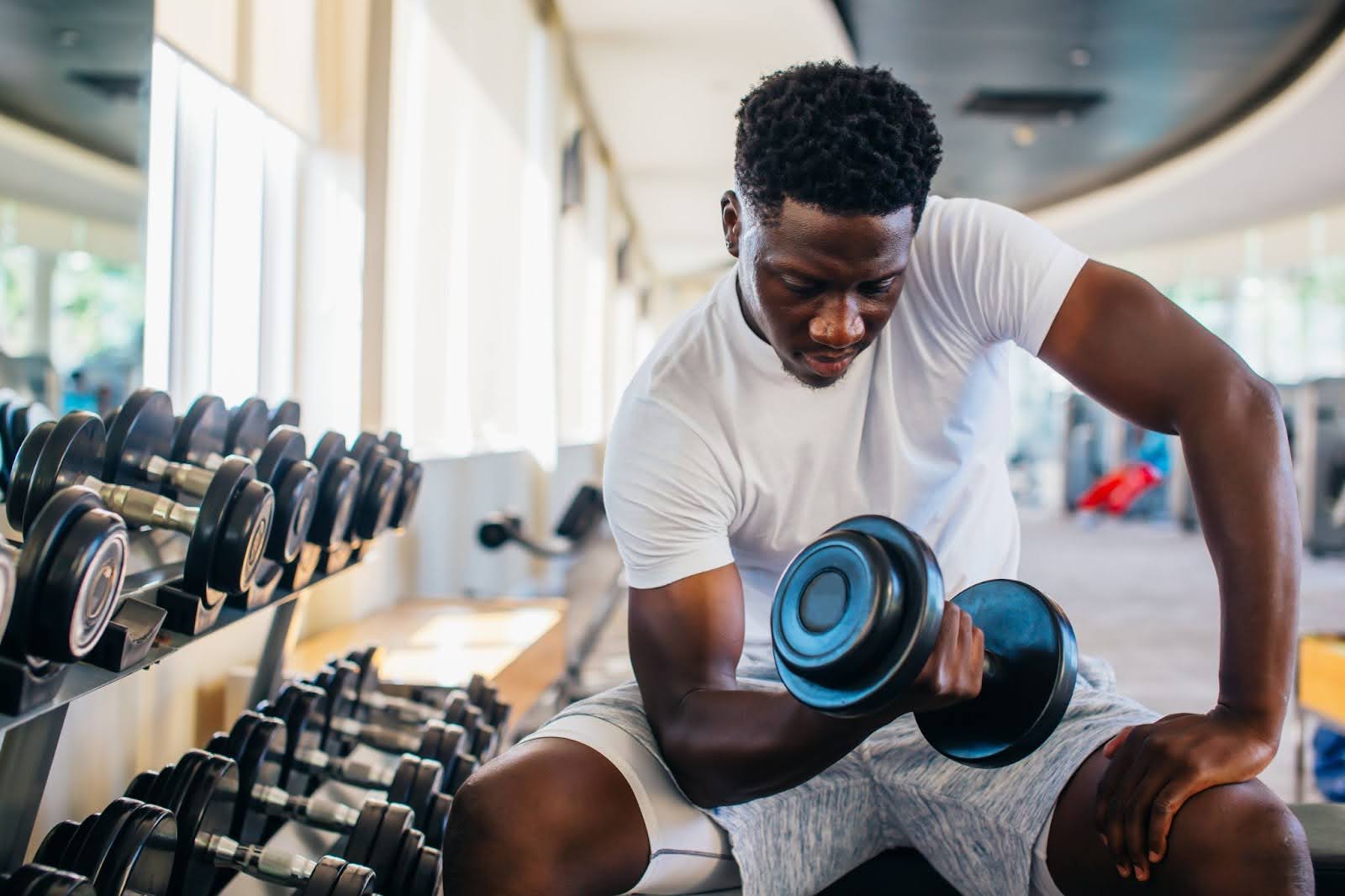So you’re beginning a strength training routine. Congrats! In just a few short weeks you’ll be barely able to fit through the door, changing your shirt will require at least two assistants, and you’ll be able to conduct the New York Philharmonic with your pectoral muscles.
As silly as it seems, this gung-ho and guns-a-blazin’ attitude is more common than you think. Which is also why most resistance training beginners often fall off the wagon as soon as they get on. But here at Studio SWEAT onDemand, we’re here to help you find your pump — and hold onto it — for the long haul. So we’ve gathered a list of strength training tips from our team of fitness experts, to help you get those gains as smartly, safely, and efficiently as possible. Ready to go? Rack ‘em!

Warm Up & Cool Down Every Time
First and foremost, we’ve got to talk about one of the biggest causes of muscle injury out there — lack of warming up and cooling down. And when you think about how easy and quick it is, there’s really no reason you aren’t doing it. Our recommendation is for 5-10 minutes before your workout, you do full body dynamic stretching (and static stretching afterwards). It might not seem that glamorous, but stretching your muscles before your workout can protect them from nasty strains or tears, and doing it post-workout will help your recovery process, so you can get back out there in no time.

Every Lift Starts Ultra Low
Similar to the warm up, lifting ultra low weight to start your workout is also an effective way to protect your body. Muscular growth only comes from doing some serious damage to your muscles, but you want to do that in a healthy way. So whatever weight you feel comfortable lifting, start off with half of that, and do a quick set of 10–15 reps to get your blood flowing. Then slowly increase as you get further into your workout.

Form Always Comes First
Repeat after us…no cheat reps! When you’re busting out a tough working set, you’ll probably notice that the last few reps are weaker than the others, usually involving some shaking, twisting, turning, wrenching, and other not-so-attractive movements your body begins making. What is actually happening is that you’re using all sorts of accessory muscles to get the weight up. And this can lead to some serious dangers down the line. But when you prioritize form above all else, you eliminate this risk. If you can’t lift a weight correctly, don’t lift it at all.


Start Heavy, End Light
Ok, but what do you do when your muscles are too fatigued to maintain proper form, but you just know you’ve got a little bit of fuel left in the tank? Simple: switch to lighter weight. Walking down your reps is an amazing way to squeeze every last inch of effort out of your muscles, bringing you ever closer to failure — and that’s where the real muscle magic happens. And switching weights doesn’t have to interrupt with your flow, either. As a movement gets tough, immediately drop weight and do another, then drop weight and do another, etc. We guarantee you’ll be feeling it in the morning.

Get That Deep Stretch
Studies have shown that the most muscle damage (AKA growth) comes from the deep stretch. That means when you’re lifting, the very bottom of the lift (the place where it’s most challenging) is where you’re doing the most good. So feel free to practice the fullest range of motion you can, sinking deep into that stretch with every repetition.

Control the Eccentric Phase
Every muscle movement comes in three parts: the concentric (when the muscle contracts), the isometric (when it stays still), and the eccentric (when it returns to the starting position). Now, you’d think that the concentric phase of the lift is where all the muscle is made, right? Wrong! It turns out that the eccentric phase is where we’re strongest, and where we can do the most muscular development. This means that when you train, drive your energy into the initial lift, hold it for a split second, and then come back down as slowly as possible.

Don’t Overdo It (But Don’t Underdo It, Either)
Now, you’ve probably heard from all sorts of gym gurus how important rest days are. And they’re totally right! Everyone needs ample time to recover from a strength training session, to be fit as a fiddle the next time around. But we want to talk about the other side of that coin — when a particular muscle is no longer sore, you can go ahead and work it! There’s no need to just take days off because you’re “supposed to”. Also, different sized muscles respond differently. So something big and beefy like the quadricep will probably take longer to recover, whereas something smaller like the biceps or calves will probably be good to go much sooner.
Now that you’re a strength training pro yourself, it’s time to kick your muscle-building up a notch, by signing up for a Free Trial with Studio SWEAT onDemand! We’ve got a huge library of virtual fitness classes, including tons of onDemand Strength Training Workouts! Sign up today, and get ready for a stronger, fitter, healthier YOU!









Comments - 0